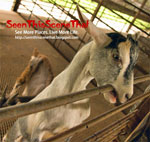
The Parks And Trees Act Chapter 216: A Fine Example To Read The Fine Print
A visitor to Seletar Reservoir was reportedly fined $3000 in the High Court under the Parks And Trees Act for committing the offence of feeding monkeys in Singapore’s Central Catchment Area (see link). Under the Parks and Trees Act Chapter 216, no one is allowed to “capture, displace or feed any animal” within any national park or nature reserve. The maximum penalty under this benign sounding Parks And Trees Act is a whopping $50,000 fine and / or six months in a harder-to-get-out-than-Mas-Selamat type of jail. For details, check out this link (statutes). or download from here.
The reasons behind the draconian punishments according to the National Parks Board are the need to protect the monkeys (from population boom and becoming dependent on handouts), and to protect park visitors who may be harmed by aggressive handout-dependent monkeys who stray into residential areas..
The sight of monkeys along Old Upper Thomson Road would surely charm most visitors to the park. The initial surge of child-like fun would prompt some to instinctively reach for food to feed them. Most people are not cognizant of the dangers that such an act would elicit. Others may be doing it to lure the monkeys closer for photographic opportunities. Whatever motivation you may have to feed the monkeys, be aware that parks rangers seem like a superhuman breed who can leap tall trees in a single bound, turn up at the scene of a crime faster than a speeding bullet, and slap you with a fine heavier than the combined weight of all reservoir water in the Central Catchment Area.
I have already alluded to the fact that appealing to common sense through educational campaigns can only go so far to influence Singaporean behaviour in my earlier post on Seen This Scene That. [check here] With the Parks And Trees Act, it seems that hitting the pocket for maximum pain has become the preferred way to align anti-monkey-feeding behaviour to acceptable standards.
Hardly anyone would bother to read the fine print under the Parks And Tress Act. However, pleading ignorance to the Parks And Trees Act cannot be used as a line of defence if you are caught dining-out with monkeys in reservoir parks. Newspapers have given much prominence to the poor souls caught in this monkey business. The long arm of the law has even planted a huge billboard by the side of the road to educate misguided visitors.
The Parks And Trees Act is a fine piece of legislation with many fine prints. There are provisions to deal with various scenarios like pollution of reservoirs, acts of destruction to our flora and fauna, and even disobeying officers carrying out the letter of the law. Suffice to say that the objective behind the Parks And Trees Act is to protect the precious natural environment for future generations to appreciate.
For a fine time in Singapore’s many fine parks without incurring any unnecessary fine, please take your animal-feeding kindness elsewhere. I am sure that the SPCA or Singapore Zoological Gardens would appreciate your animal-loving kindness more.
See more places. Feed no monkeys.
Welcome To Seen This Scene That :
June 03, 2008
The Parks And Trees Act Chapter 216: A Fine Example To Read The Fine Print
 scene that
scene that
Many other readers liked to read these posts:
1 Famous Old Places of Singapore
3 Fun Places For Children To Visit
4 Fishing Places For Children To Visit
5 Hort Park: Hot Place To Visit
6 Free Things To Do In Singapore
Labels:
Parks And Trees Act
Subscribe to:
Post Comments (Atom)




1 comments:
Many visitors misunderstand that feeding is for the good of the ' starving ' monkeys, or for the fun of it, but they probably do not know that this action is not encouraging the natural morphology.
See more places, feed no monkeys indeed. =P
Post a Comment